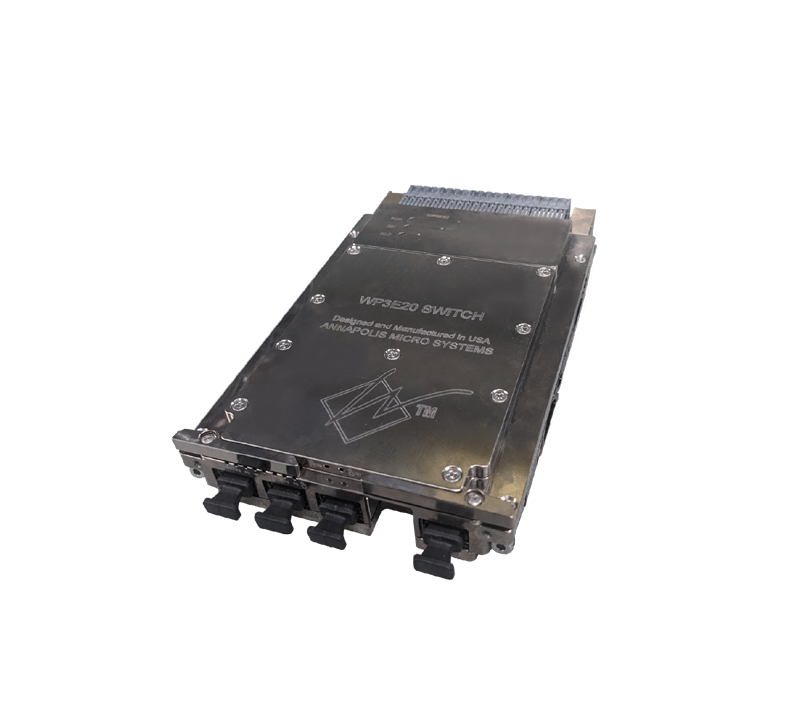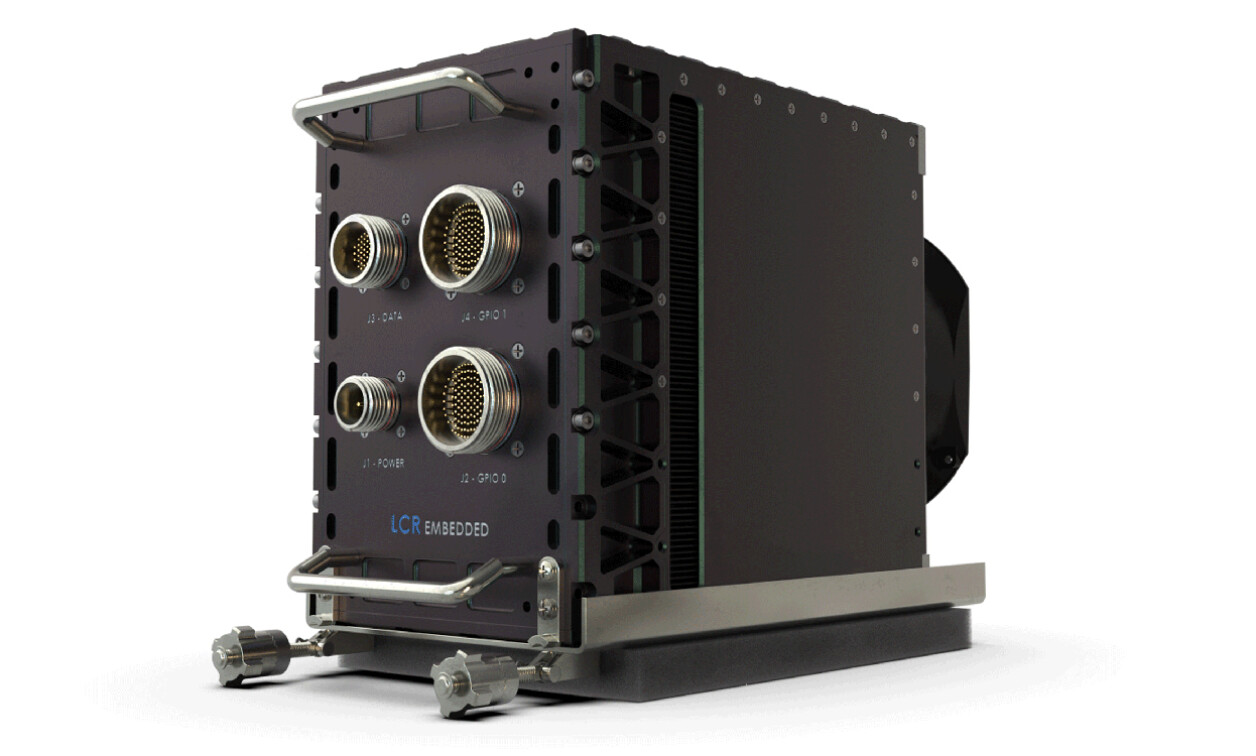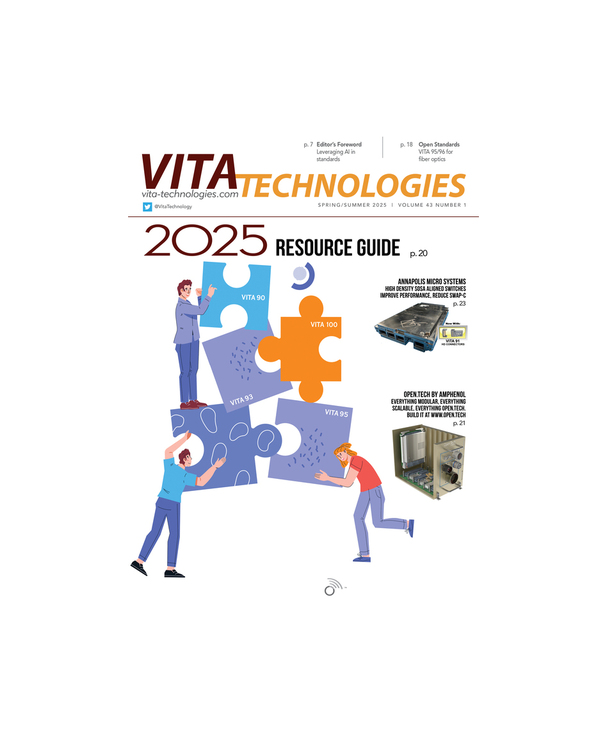SCOTTSDALE, AZ – October 23, 2006 – VITA, the leading trade association in the critical embedded computing industry, has marked the 25th anniversary of the VME technology open standard. VME is the only open set of computing standards for the modular construction of embedded computers that are used in applications spanning commercial products to extremely harsh environments.
Because it is an open specification, VME technology is found in more than 25 million myriad products where precision, reliability and durability under demanding real-world conditions are mandatory requirements.
The top markets for VME-based products are military, government, and commercial-off-the-shelf (COTS) systems; high-end industrial controls; communications equipment; and instrumentation for medical, healthcare, transportation, scientific applications.
To meet the evolving needs of critical embedded systems, nearly 60 VME technology specifications have been defined. Recently, VITA introduced specifications to enable networked fabrics in 6U rugged systems (VPX VITA 48), new methods to determine system reliability (VITA 51), new mezzanine module options (VITA 56), and new packaging schemes to make systems more robust and interchangeable (VITA 58).
VITA intends to support the original VME concept and its enhancements while at the same time providing a pathway for future critical embedded system development. Membership in VITA, the organization chartered with the management of VME Technology continues to grow as companies join to participate in the development of open architecture standards key to the implementation of critical embedded systems.
Ray Alderman, executive director of VITA, described the value of the VME standard, saying, “No open architecture in the history of the embedded computer industry has grown and prospered for 25 years except VME. Many other computing standards have come and gone because they no longer added value for the manufacturers and users of those technologies. VME continues to flourish worldwide because the specifications continually incorporate the newest technologies, thanks to the collective efforts of the members in the VITA Standards Organization.”
The VITA Board of Directors offers their reflections on the past 25 years.
Doug Patterson, VITA Board of Directors Member and Vice President – International Sales and Marketing, Aitech: “The cooperative nature of VMEbus vendors during the introduction of this bus architecture to the military market demonstrated just how powerful and beneficial a truly cooperative effort could be. Early adopters of VME for the military, including Aitech and Radstone Technology and through the efforts of people like Kim Clohessy of Dy4 Systems, literally changed and created a market that served not only the industry, but our country’s warfighters as well.
As the first company to introduce a true “Mil-Spec” VME board, Aitech pays tribute to all who helped build this industry.”
Jim Berlin, VITA Board of Directors Member and Global Technology Leader, GE Fanuc: “The perseverance of VMEbus is no surprise. In the face of so many would-be usurpers it continues to get the job done with the steady reliability it has earned through its maturity. GE Fanuc Embedded Systems has been built from many smaller companies, most of which had invested in VME and continue to share in its success. We continue to develop new products that take advantage of this trusted technology as it addresses the needs of our customers today.”
Eran Cohen Strod, VITA Board of Directors Member and Director, Product Marketing, Mercury Computer Systems: “Mercury Computer Systems was founded in 1981; the same year that VME made its first appearance on the embedded scene. In the past quarter century, we have had the privilege to see modular, open-standard backplane architectures transform the world of military and industrial embedded computing. As a market leader in VME boards, Mercury continues to look to VITA to address distributed sensor processing and computing-on-the-move, even as rugged, next generation VME solutions share IO interconnects, system fabrics, industry standard processors and open standard software with more “benign” form factor architectures.”
Paul Virgo, VITA Board of Directors Member and Director, Motorola Embedded Communications Computing: “Motorola’s heritage traces back to VMEbus. It is in our DNA, and we continue to leverage the experience and learning of the last 25 years in our strategies for delivering innovative solutions to the embedded computing market. As the original multi-market bus architecture, VMEbus is one of the very few standards that has endured successfully for two and a half decades. And we will continue to offer industry-leading VMEbus platforms in the future.”
John Hill, VITA Board of Directors Member and Chief Standards Strategy Officer, Sun Microsystems: “Throughout its history, and especially now, VITA has been exemplary, a model for others to follow. VITA’s open hardware standards have enabled the longest-lived architecture of all time to flourish while so many have come and gone. VITA has, and continues to serve their markets well. VITA’s open processes have developed open standards that have secured an important place in the history of electronic computing. VMEbus products built on VITA standards have probed the depths of the earth, the bottom of the ocean, and far-away planets.”
Success Attributes of the VME Technology
The VME technology creates and maintains an open architecture standard that evolves with technology to remain state-of-the-art. This allows companies to use the technology in products from generation to generation. This has a significant impact because it extends product life cycles and allows companies to save the costs associated with new-product development cycles.
The VITA organization sustains an ecosystem that strongly supports the standard. VITA provides technical expertise to evolve the standard and maintain a large base of industry recognized suppliers with broad VME technology product portfolios.
VME’s History
The VME technology open standard was launched on October 21, 1981 by Motorola, Mostek, Signetics/Philips, and Thomson CSF. The four companies joined together to announce a 16-/32-bit parallel computing bus that was loosely based on the 68000 processor bus. The goal was to have a cooperatively developed, public-domain standard for embedded computing that was backed by an independent organization to provide stewardship and strong promotion. VME has since been recognized as an embedded computing architecture of choice for applications ranging from commercial to military and from office to harsh, ruggedized environments. The original press release can be viewed at www.vita.com/jubilee/.
In 1983, 45 companies listed a total of 196 products in the first industry buyers’ directory. In 2006 there are more than 130 companies worldwide listed with thousands of products.
VME technology has evolved substantially over the years. Over 35 complimentary specifications have been approved which enhance performance and capability. VMEbus bandwidth has improved from the original 10 MB/s to over 300 MB/s in today’s products. The VME technology roadmap is supported by activities (VXS and VPX) with switch fabrics where the aggregate system bandwidth will exceed 100GB/s. VMEbus technology continues to evolve to be faster, more durable, and more system friendly than ever before.
About VITA
VITA is an incorporated, non-profit organization of suppliers and users having a common market interest in critical embedded systems. Founded in 1984, VITA believes in and champions open system architectures as opposed to proprietary system architectures. VITA’s activities are international in scope. The functions performed by VITA are technical, promotional and user related and are aimed at increasing the total market size, providing vendors with additional market exposure, and providing users with timely technical information. VITA has ANSI and IEC accreditation for the development of standards for embedded computers, including critical applications and harsh environments, to enable VITA to be the steward of VME technology.
For information about VITA membership or VITA specifications, visit www.vita.com, or call VITA headquarters at +1-480-837-7486.
VME Technology Standards Application Examples
Aerospace
Automotive
Biometrics
DoD C4ISR
Data Acquisition/Control
Energy
Imaging
Industrial
Medical
Navigation/Guidance
Oil & Gas
Planetary Exploration
Printing
Robotics
Security
Simulation & Training






